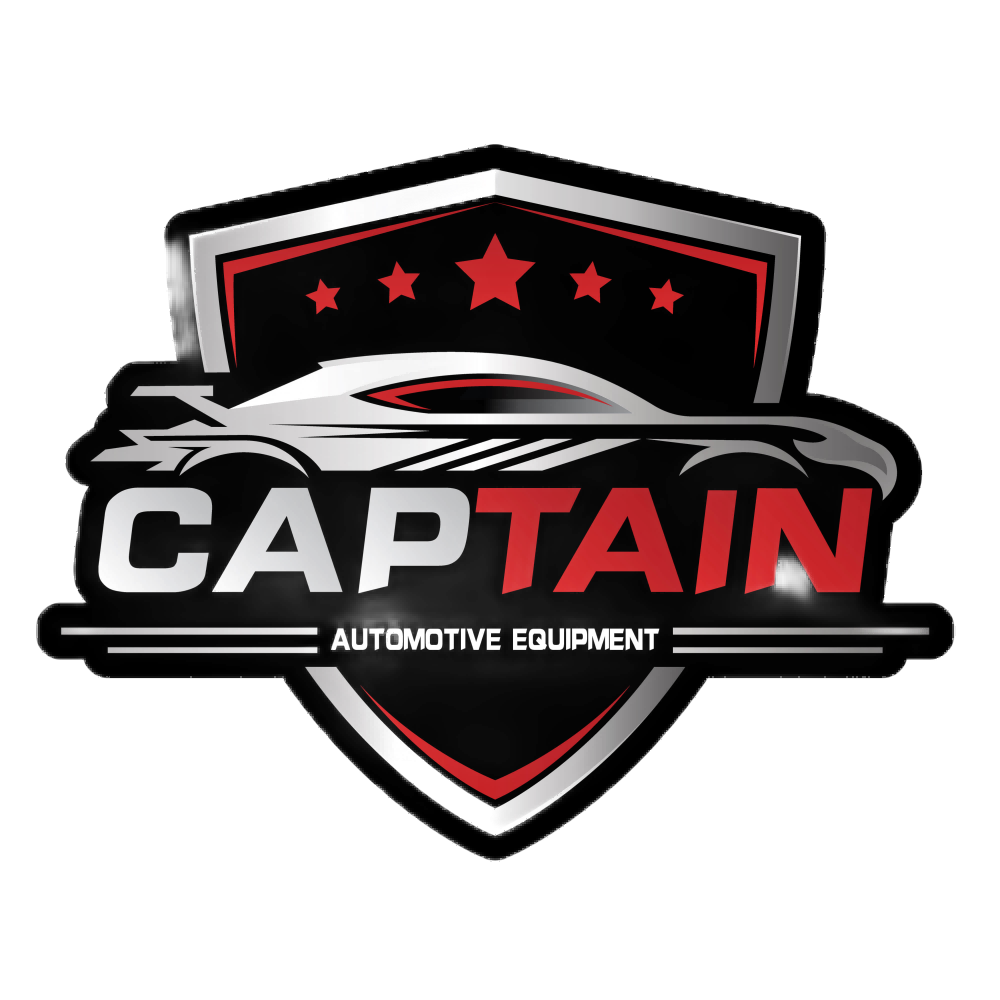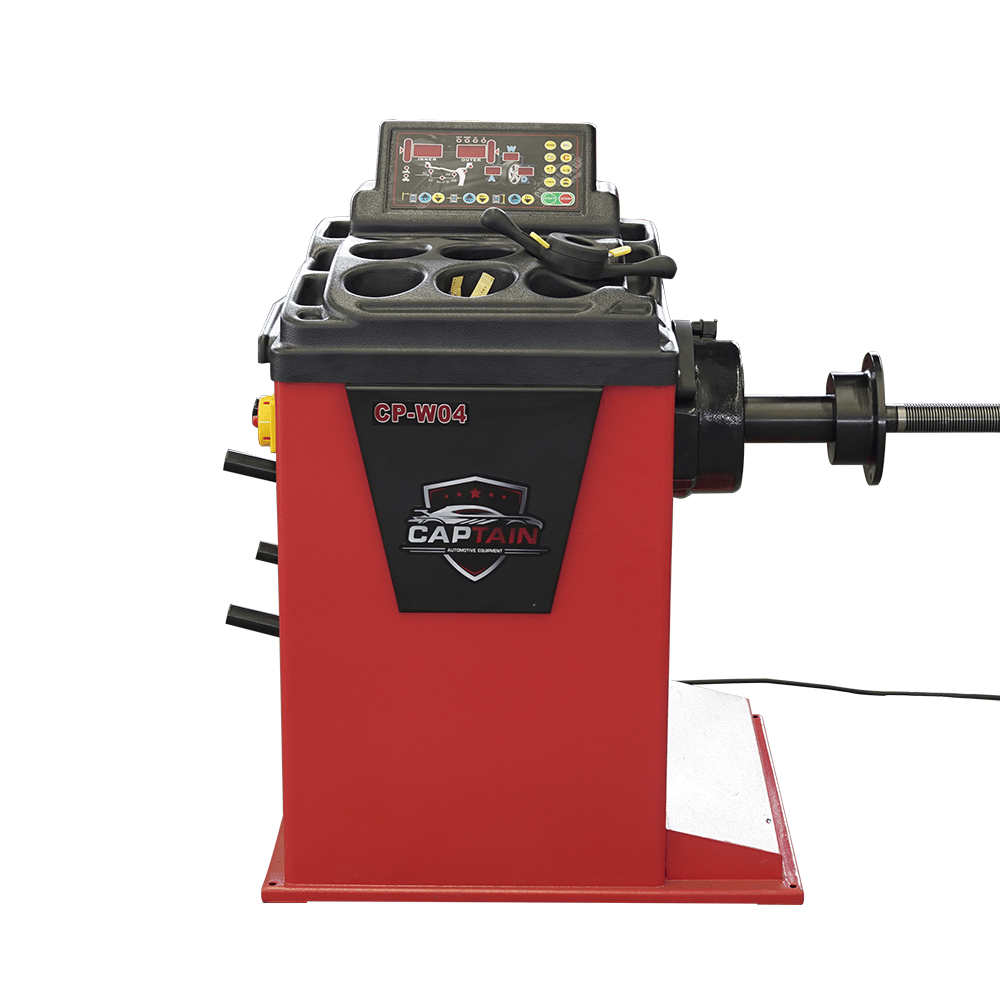परिचय
सही कार लिफ्ट तपाईंको ग्यारेजको लागि यो केवल सुविधाको बारेमा मात्र होइन सुरक्षा र दक्षता पनि हो। सही विकल्पले तपाईंलाई स्मार्ट काम गर्न र तपाईंको गाडी सुरक्षित राख्न मद्दत गर्छ। [पृष्ठ २-मा भएको चित्र] यी कुराहरूले तपाईंलाई सही लिफ्टमा डोऱ्याउनेछ।
कार लिफ्टका प्रकारहरू
कार लिफ्टको बारेमा धेरै कुराहरू प्रत्येक प्रकारका विशेष विशेषताहरू हुन्छन्। अब हामी तिनीहरूलाई तल तल तल तल हेर्छौं ताकि तपाईं निर्णय गर्न सक्नुहुन्छ कि तपाईंको लागि के राम्रो काम गर्दछ।
दुई-पोस्ट लिफ्ट
दुई-पोस्ट लिफ्टहरू लोकप्रिय विकल्प हुन् मुख्य पृष्ठ ग्यारेजहरू। [पृष्ठ २-मा भएको चित्र] यी लिफ्टहरू मर्मतका लागि उत्कृष्ट छन् किनकि यसले तपाईंलाई तपाईंको कारको तलको भागमा पूर्ण पहुँच दिन्छ। यदि तपाईं सीमित स्थानमा काम गर्दै हुनुहुन्छ भने, यो कम्प्याक्ट विकल्प तपाईंको लागि सही कार लिफ्ट हुन सक्छ। [पृष्ठ २-मा भएको चित्र]
चार-पोस्ट लिफ्ट
चार-पोस्ट लिफ्टहरू स्थिरताको बारेमा सबै हुन्। तिनीहरू तपाईंको गाडीलाई समर्थन गर्न चार स्तम्भहरू प्रयोग गर्छन्, जसले गर्दा ती भारी कार वा ट्रकहरूको लागि आदर्श हुन्छन्। यदि तपाईंलाई अतिरिक्त भण्डारणको आवश्यकता छ भने यी लिफ्टहरू उत्तम छन् किनकि तपाईं एउटा कार लिफ्टमा र अर्को तल पार्क गर्न सक्नुहुन्छ। दुई-पोस्ट लिफ्टको तुलनामा तिनीहरू स्थापना गर्न सजिलो छ, तर तिनीहरूले तपाईंको ग्यारेजमा अधिक ठाउँ लिन्छन्।
काँचो लिफ्ट
काँचो लिफ्ट कम्प्याक्ट र पोर्टेबल छन्। तिनीहरूले तपाईंको कार उठाउनको लागि एक क्रसक्रसिंग धातु फ्रेम प्रयोग गर्छन्। यी लिफ्टहरू तेल परिवर्तन वा टायर घुमाउने जस्ता छिटो मर्मतका कार्यहरूका लागि उत्कृष्ट छन्। तिनीहरू अन्य विकल्पहरू जस्तै उच्च उठ्दैनन्, तर तिनीहरूको सानो आकारले तिनीहरूलाई संकीर्ण स्थानहरूको लागि राम्रो फिट बनाउँछ।
पोर्टेबल लिफ्ट
पोर्टेबल लिफ्ट हल्का र सार्न सजिलो छ। यदि तपाईंलाई लचिलोपन चाहिएको छ वा विभिन्न स्थानहरूमा काम गर्न चाहनुहुन्छ भने तिनीहरू उत्तम छन्। यी लिफ्टहरू सामान्यतया सानो र सस्तो हुन्छन्, तर ती भारी सवारी साधनहरू चलाउन सक्दैनन्।
विशेष लिफ्टहरू (जमिनमा र पign्क्तिबद्ध लिफ्टहरू)
विशेष लिफ्टले विशेष आवश्यकता पूरा गर्छ। घरको छतमा राखिएको लिफ्टले ग्यारेजलाई स्वच्छ र व्यावसायिक बनाउँछ। एक जनाले लेखेका छन्, 'अनिल र्याकले धेरै काम गर्छ। यी विकल्पहरू महँगो छन् तर यदि तपाईंलाई विशेष कार्यक्षमता चाहिएको छ भने यसको लायक छ।
सुझावः तपाईले लिफ्टलाई प्रायः कसरी प्रयोग गर्नुहुन्छ भन्नेबारे सोच्नुहोस्। चाहे यो मरम्मत, भण्डारण वा द्रुत मर्मतका लागि हो, त्यहाँ तपाईंको आवश्यकता अनुसार लिफ्ट छ।
सही कार लिफ्ट छनौट गर्नका लागि मुख्य विचारहरू
ग्यारेज स्पेस र छत उचाइ
कार लिफ्ट छनौट गर्नुअघि आफ्नो ग्यारेजमा राम्रोसँग हेर। कति ठाउँ छ? चौडाई, लम्बाई र सबैभन्दा महत्त्वपूर्ण कुरा, छतको उचाइ नाप्नुहोस्। केही लिफ्टहरू, जस्तै चार-पोस्ट मोडेलहरू, अधिक ठाडो खाली ठाउँ चाहिन्छ। यदि तपाईंको ग्यारेजको छत कम छ भने, एक कैंची लिफ्ट राम्रो फिट हुन सक्छ। तपाईँले रोजेको लिफ्टले तपाईँलाई आरामदायी काम गर्न पर्याप्त ठाउँ छोड्नेछ भन्ने कुरा सधैं पक्का गर्नुहोस्।
कंक्रीटको शक्ति र भुइँको PSI रेटिंग
तपाईंको ग्यारेजको भुइँले कार लिफ्टलाई समर्थन गर्न ठूलो भूमिका खेल्छ। अधिकांश लिफ्टहरूलाई विशिष्ट मोटाई र PSI (पाउन्ड प्रति वर्ग इन्च) रेटिंगको साथ कंक्रीट स्लैब चाहिन्छ। उदाहरणको लागि, दुई-पोस्ट लिफ्टहरूलाई प्रायः कम्तिमा 4 इन्चको कंक्रीटको आवश्यकता हुन्छ जुन 3,000 PSI रेटिंगको साथ हुन्छ। सुरक्षा समस्याबाट बच्नको लागि स्थापना गर्नुअघि आफ्नो भुइँको विवरण जाँच गर्नुहोस्।
सवारी साधनको तौल र उठ्ने क्षमता
सबै लिफ्टले हरेक गाडीलाई सम्हाल्न सक्दैनन्। तपाईंले उठाउने सबैभन्दा भारी कार वा ट्रकको बारेमा सोच्नुहोस्। [पृष्ठ २-मा भएको चित्र] लिफ्टमा अत्यधिक भार हुनु खतरनाक हुन सक्छ, त्यसैले यहाँ कुनामा नछाड्नुहोला।
सममित बनाम असममित लिफ्ट
सममित लिफ्टले तपाईंको कारको तौललाई सन्तुलित रूपमा सन्तुलित गर्दछ, जबकि असममित लिफ्टले तौललाई केही हदसम्म पछाडि तान्दछ। यदि तपाईँ ठूला सवारी साधनहरूमा काम गर्नुहुन्छ भने, सममित लिफ्ट राम्रो हुन सक्छ। सानो कारहरूको लागि, असममित लिफ्टहरूले ढोका पहुँचलाई सजिलो बनाउँछ।
उद्देश्य: भण्डारण बनाम मरम्मत
तपाईंको मुख्य लक्ष्य के हो? यदि तपाईंलाई अतिरिक्त पार्किङ ठाउँ चाहिएको छ भने, चार-पोस्ट लिफ्ट आदर्श छ। कारको मर्मतका लागि दुई-पोष्ट लिफ्टले तपाईंको कारको तलको भागमा सजिलो पहुँच दिन्छ। आफ्नो उद्देश्य जानेर तपाईंले आफ्नो आवश्यकता अनुसारको कार लिफ्ट पाउन मदत गर्नुहुन्छ।
प्रयोगको आवृत्ति
तपाईं कति पटक लिफ्ट प्रयोग गर्नुहुन्छ? यदि यो कहिलेकाहीँ मर्मतका लागि हो भने, पोर्टेबल वा कैंची लिफ्टले काम गर्न सक्छ। दैनिक प्रयोगको लागि, टिकाऊ, भारी-उपयोग मोडेलमा लगानी गर्नुहोस्। बारम्बार प्रयोग गर्दा पहिरन सहन सक्ने लिफ्ट चाहिन्छ।
प्रो टिप : आफ्नो ग्यारेजको सेटअप र यसलाई कसरी प्रयोग गर्ने योजना बनाउनुहुन्छ भन्ने कुरालाई सधैं आफ्नो लिफ्टको विकल्पसँग मेल खानुहोस्। यसले सुरक्षा र दक्षता सुनिश्चित गर्दछ।
सुरक्षा सुविधा र प्रमाणपत्र
सही कार लिफ्ट छनौट गर्दा, सुरक्षा सधैं पहिलो हुनुपर्छ। एक विश्वसनीय लिफ्टले तपाईंको गाडीलाई मात्र होइन तर काम गर्दा तपाईंलाई पनि सुरक्षित राख्छ। अब तपाईँले खोज्नुपर्ने प्रमुख सुरक्षा सुविधा र प्रमाणपत्रहरूको बारेमा जानौं।
एएलआई प्रमाणीकरणको महत्व
अटोमोबाइल लिफ्ट संस्थान (एएलआई) प्रमाणपत्र कुनै पनि कार लिफ्टको लागि अनिवार्य छ। यो प्रमाणपत्रले लिफ्टले कडा सुरक्षा र प्रदर्शन मापदण्डहरू पूरा गर्दछ भन्ने अर्थ दिन्छ। ALI-प्रमाणित लिफ्टहरू प्रयोग गर्नका लागि सुरक्षित छन् भन्ने सुनिश्चित गर्न कठोर परीक्षणबाट गुज्रन्छन्। यदि लिफ्टमा यो प्रमाणपत्र छैन भने, यो टाढाबाट चलाउनु राम्रो हुन्छ। तपाईँ आफ्नो सुरक्षा वा गाडीको जोखिम उठाउन चाहनुहुन्न।
निर्मित सुरक्षा संयन्त्रहरू
आधुनिक कार लिफ्टमा सुरक्षा सुविधाहरू छन् जसले तपाईंको कामलाई सजिलो र सुरक्षित बनाउँछ। स्वचालित लक प्रणाली भएको लिफ्ट खोज्नुहोस्। यी तालाहरू लिफ्ट उठ्दा नै सक्रिय हुन्छन्, जसले यसलाई फिसल्नबाट रोक्छ। अतिभार सुरक्षा अर्को आवश्यक विशेषता हो। यसले लिफ्टलाई काम गर्नबाट रोक्छ यदि वजन यसको क्षमता भन्दा बढी छ। काम गर्दा यी संयन्त्रहरूले तपाईंलाई मनको शान्ति दिन्छ।
सामग्रीको गुणस्तर र स्थायित्व
कार लिफ्टमा प्रयोग हुने सामग्रीले यसको सुरक्षा र जीवनकालमा ठूलो भूमिका खेल्छ। उच्च गुणस्तरीय इस्पात सुनको मानक हो। यो ढुङ्गाको कपालमा के छ? सस्तो सामग्रीबाट बनेका लिफ्टहरूबाट बच्नुहोस् तिनीहरूले तपाईंलाई अग्रिम रूपमा पैसा बचत गर्न सक्छन् तर तपाईंलाई सबैभन्दा बढी चाहिने बेलामा असफल हुन सक्छन्। एक टिकाऊ लिफ्ट तपाईंको सुरक्षा र सुविधामा लगानी हो।
नोट : सही कार लिफ्ट छनौट गर्दा सधैं सुरक्षा सुविधा र प्रमाणपत्रलाई प्राथमिकता दिनुहोस्। मनको शान्तिका लागि थोरै बढी खर्च गर्नु राम्रो हुन्छ।
बजेट र लागत विचार
कार लिफ्टको विकल्प खोज्दा, यसमा लाग्ने खर्चलाई बुझ्दा बुद्धिमानीपूर्वक निर्णय गर्न मदत हुन्छ। अब, तपाईँले आफ्नो बजेटलाई प्रभावकारी रूपमा योजना बनाउन सकून् भनेर मुख्य खर्चहरू तल तल तल लेखौं।
प्रारम्भिक खरिद लागत
पहिलो कुरा लिफ्टको मूल्यलाई विचार गर्नु हो। कार लिफ्टको प्रकार र विशेषता अनुसार धेरै मूल्यमा आउँछ। सामान्य क्यान्सर लिफ्ट वा पोर्टेबल मोडलहरू प्रायः सस्तो हुन्छन्, लगभग १,००० डलरबाट सुरु हुन्छ। [पृष्ठ २-मा भएको चित्र] आफ्नो आवश्यकता र कति खर्च गर्न तयार हुनुहुन्छ भन्नेबारे सोच्नुहोस्। उच्च मूल्यले प्रायः राम्रो गुणस्तर र स्थायित्वको अर्थ दिन्छ, तर तपाईंलाई सधैं सबैभन्दा महँगो विकल्पको आवश्यकता पर्दैन।
स्थापना र रखरखाव लागत
लिफ्ट किन्नु सुरुवात मात्र हो। स्थापनाले महत्त्वपूर्ण लागत थप्न सक्छ, विशेष गरी ठूलो वा अधिक जटिल मोडेलहरूको लागि जमिनमा लिफ्टहरू। तपाईंका लागि यो काम गर्नका लागि व्यावसायिक सहयोग चाहिन्छ। मर्मतसम्भार तपाईंको लिफ्टलाई नियमित जाँच, लुब्रिकेशन, र पार्ट्स बदल्नुहोस् यी लागतहरू समयसँगै बढ्न सक्छन्, त्यसैले तिनीहरूलाई अग्रिम रूपमा बजेट गर्नु राम्रो हुन्छ।
लागत र गुणस्तर र विशेषताहरु बीच सन्तुलन
सबैभन्दा सस्तो विकल्प खोज्नको लागि यो प्रलोभन हो, तर यो सधैं उत्तम विकल्प हुँदैन। कम लागतको लिफ्टमा आवश्यक सुरक्षा सुविधाहरू वा स्थायित्व नहुन सक्छ। अर्कोतर्फ, तपाईंले प्रयोग नगर्ने सुविधाहरूमा अधिक खर्च गर्न आवश्यक छैन। [पृष्ठ २-मा भएको चित्र] यदि तपाईं प्रायः लिफ्ट प्रयोग गर्नुहुन्छ वा भारी सवारीका लागि, उच्च गुणस्तरको मोडेलमा लगानी गर्नु उचित हुन्छ। एक जनाले आफ्नो जीवनसाथीलाई कसरी मदत गर्न सक्छ?
टिप : सधैं दीर्घकालीन सोच राख्नुहोस्। [पृष्ठ २९-मा भएको चित्र]
सही विकल्प बनाउनका लागि सुझाव
तपाईंको ग्यारेजको लेआउट र आवश्यकताहरूको मूल्याङ्कन गर्नुहोस्
आफ्नो ग्यारेजमा नजिकबाट हेर्ने काम सुरु गर्नुहोस्। छतको उचाई सहितको ठाउँ नाप्नुहोस् र आरामसँग काम गर्न कति ठाउँ चाहिन्छ भनेर सोच्नुहोस्। के तपाईंको ग्यारेज चार-पोस्ट लिफ्टको लागि पर्याप्त फराकिलो छ, वा क्यासर लिफ्ट राम्रोसँग फिट हुन्छ? तपाईंको गाडीको प्रकार पनि विचार गर्नुहोस्। कम्पेक्ट कारको आवश्यकता भारी-कर्जा ट्रकको भन्दा फरक हुन्छ। तपाईंको ग्यारेजको लेआउट लिफ्टको आवश्यकताहरूसँग मिल्दा तपाईं आफ्नो लगानीबाट अधिकतम प्राप्त गर्न सुनिश्चित गर्नुहुन्छ।
अनुसन्धान र ब्रान्ड तुलना
सबै कार लिफ्टहरू समान रूपमा सिर्जना गरिएको छैन। केही समय प्रतिष्ठित ब्रान्डको अनुसन्धानमा बिताउनुहोस्। ग्राहकहरूको समीक्षा र मूल्याङ्कन हेर्नुहोस्। ब्रान्डले ग्यारेन्टी वा ग्राहक समर्थन प्रदान गर्छ कि गर्दैन जाँच गर्नुहोस्। गुणस्तर र लागतलाई सन्तुलित पार्ने सही कार लिफ्ट खोज्नका लागि तपाईँले विभिन्न ब्रान्डका सुविधाहरू, सुरक्षा प्रमाणपत्रहरू र मूल्यहरू तुलना गर्न सक्नुहुन्छ। यो कदममा हतार नगर्नुहोस्, यो प्रयासको लायक छ।
विशेषज्ञहरूसित परामर्श लिनुहोस्
यदि तपाई कुन लिफ्ट छनौट गर्ने बारे अनिश्चित हुनुहुन्छ भने, एक पेशेवरलाई सम्पर्क गर्नुहोस्। कारखानाको उपकरण विशेषज्ञ वा अनुभवी मेकानिकले मूल्यवान सल्लाह दिन सक्छन्। तिनीहरूले तपाईंलाई तपाईंको विशेष आवश्यकताहरूको लागि के उत्तम काम गर्दछ भनेर बुझ्न मद्दत गर्नेछन्। एक पटकमा सल्लाह लिँदा महँगो गल्ती गर्नबाट बचाउन सकिन्छ
भविष्यका सवारी साधन आवश्यकताहरूको लागि योजना
अगाडि सोच्नुहोस्। के तपाईँ आफ्नो वर्तमान गाडीमा बस्नुहुन्छ, वा तपाईँले ठूलो गाडीमा अपग्रेड गर्ने योजना बनाउनुहुन्छ? [पृष्ठ २-मा भएको चित्र] भविष्यको लागि योजना बनाउँदा तपाईंको लिफ्ट धेरै वर्षसम्म उपयोगी रहनेछ।
प्रो टिप समय दिनुहोस्। अबको केही अतिरिक्त योजनाले तपाईंलाई पैसा र टाउको दुखाइ बचाउन सक्छ।
सही कार लिफ्ट छनौट गर्न समय र सावधानीपूर्वक विचार चाहिन्छ। निर्णय गर्नुअघि ग्यारेजको संरचना, गाडीको आवश्यकता र बजेटबारे जान्नुहोस्। सुरक्षा प्रमाणपत्र र गुणस्तरलाई सधैं प्राथमिकता दिनुहोस्। ढिलो ढिलो अनुसन्धान नगर्नुहोस् र विकल्पहरू तुलना गर्नुहोस्। सही विकल्पले तपाईंको ग्यारेज परियोजनाहरूको लागि सुरक्षा, सुविधा र दीर्घकालीन सन्तुष्टि सुनिश्चित गर्दछ।

